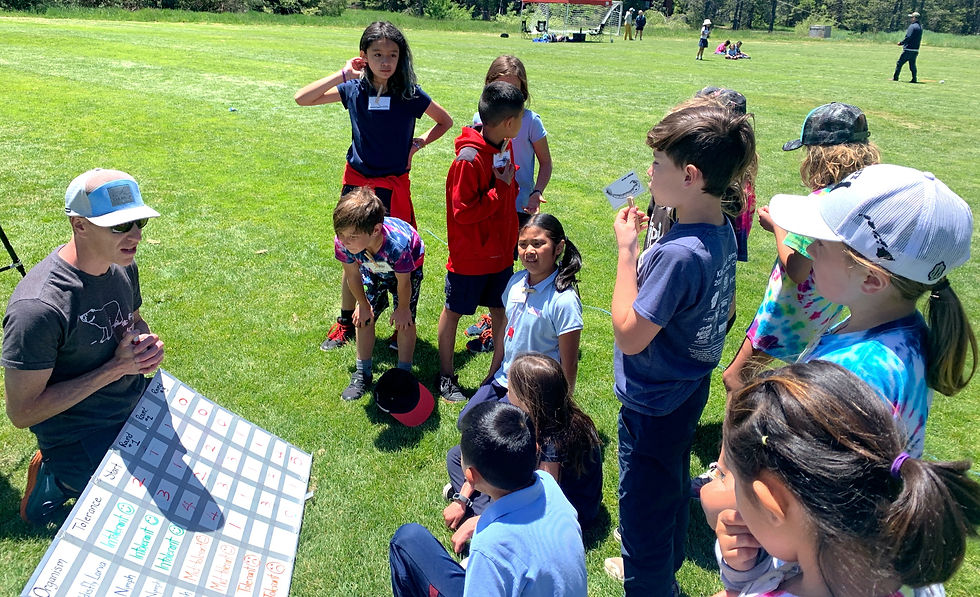A Day of Native Trout Education
- Jenna Granger
- Jun 16, 2022
- 3 min read
On a perfect June day, 112 third grade students from Tahoe Lake and Kings Beach elementary schools ventured to TCPUD's Pomin Park, just off the shores of Lake Tahoe. These students gathered together for SWEP's Fisheries Field Day: a day of learning about our native trout species, the Lahonton Cutthroat Trout (LCT), and the lake and river ecosystems that support them.
Students were placed into small groups which included students from both schools and sent to 7 different stations throughout the day. These stations incorporated games, scavenger hunts, art, fly fishing and more - all with the theme of local fisheries and fish.

Station 1
Students learned what a day in the life of a Lahonton Cutthroat Trout looks like with the fish and wildlife biologists from the Lahonton National Fish Hatchery Complex. Students made color coded bracelets, explored the insides of a giant blow up trout and played the part of the LCT traveling in search of their home streams by using their sense of smell.

Station 2
Fish printing! Students were able to learn about trout anatomy and tap into their creativity while working with SWEP to create gyotaku fish prints with rubber trout replicas and paint.

Station 3
Groups got to tour UC Davis Tahoe Environmental Research Center's (TERC's) Eriksson Education Center also know as the Historic Fish Hatchery. TERC educators shared the history of the hatchery, current and historical food webs and the timeline of non-native species introductions to the lake and how this impacted the food web. Students were surprised to learn that the Kokanee Salmon escaped from that very hatchery in the 1940's.

Station 4
Working in pairs, students participated in a scavenger hunt on the interpretive trail behind the Historic Fish Hatchery. Students learned about the importance of wetlands as a habitat for native plants and wildlife and had an opportunity to make a nature drawing of a native plant and identify it with SWEP's favorite book: John Muir Laws's Sierra Field Guide.

Station 5
Through looking at live macro-invertebrates found in local waterways, students got to observe, learn and classify these species with a fisheries biologist expert. Students learned that macro-invertebrates are not only important decomposers in stream environments and crucial food source for our native trout, but also act as bio-indicators of stream health.

Station 6
Getting a chance to run around, students played Macro-Invertebrate Mayhem with SWEP. A game where they learn about tolerant and intolerant macro-invertebrates species and how population surveys of macro-invertebrates are used to determine watershed health.

Station 7
Students received lessons in fly fishing from volunteers from Cast Hope and got to practice their casting and reeling skills on the fields of Pomin Park.

Overall the day was a success! Students left tired, but happy after a fun day playing, learning and meeting new friends. SWEP and all the incredible volunteers were fulfilled by student excitement and smiles. And school teachers got to spend the day seeing their students thrive in a new environment while learning about local fish!
Thank you to the TCPUD for donating the use of Pomin Park for the day, TERC for providing tours of the Historic Fish Hatchery, to Lahonton Nation Fish Hatchery Complex for educating students about our native and threaten trout species, to Cast Hope for introducing students to the art and love of fly fishing, and to all the individual volunteers (and students & teachers) that made this day possible and fun!




















Comments